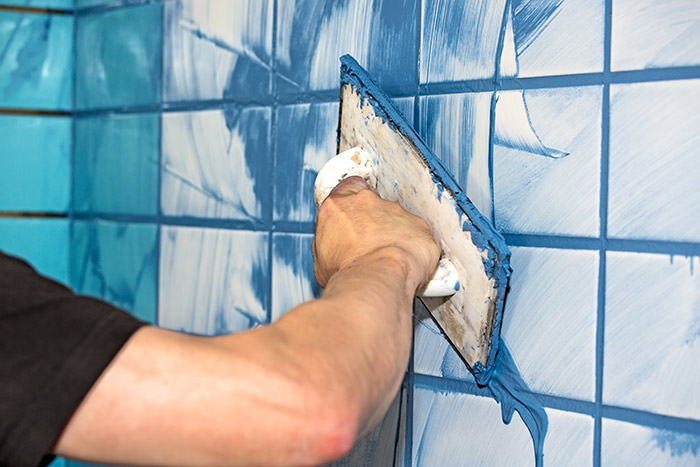When you think of home improvement projects, perhaps the idea of retiling a shower comes to mind. Picture this: you decide to use epoxy grout for its durability and resistance to stains and chemicals. But hold on, is epoxy grout difficult to work with? Before you dive into your project, let’s explore the intricacies of handling this particular type of grout.
Properties of Epoxy Grout
- When working with epoxy grout, it’s essential to understand its unique properties for successful application and durability. Epoxy grout is highly regarded for its exceptional chemical resistance, making it ideal for areas prone to exposure to harsh chemicals or acids. This quality ensures that the grout maintains its integrity and structural strength over time, even in challenging environments.
- Moreover, epoxy grout boasts outstanding durability, outperforming traditional cement-based grouts. Its ability to withstand heavy foot traffic and resist wear and tear makes it a long-lasting solution for various applications. Additionally, the stain resistance of epoxy grout is unmatched, providing ease of cleaning and maintenance. This feature is particularly advantageous in spaces like kitchens and bathrooms, where spills and stains are common occurrences.
- Understanding these properties of epoxy grout is crucial for achieving optimal results in your tiling projects. By leveraging its chemical resistance, durability, stain resistance, and ease of cleaning, you can ensure a long-lasting and visually appealing finish that stands the test of time.

Advantages of Using Epoxy Grout
- Utilizing epoxy grout in tiling projects offers a multitude of advantages due to its exceptional properties and durability. Epoxy grout is renowned for its long-lasting durability, making it a top choice for areas with high traffic or exposure to moisture. Unlike traditional cementitious grout, epoxy grout is resistant to cracking, shrinking, and staining, ensuring a reliable and sturdy bond between tiles that withstands the test of time.
- One of the key advantages of using epoxy grout is its stain-resistant benefits. Epoxy grout repels liquids, preventing them from seeping into the grout and causing unsightly stains. This feature makes epoxy grout particularly suitable for areas prone to spills or splashes, such as kitchens and bathrooms. Additionally, the non-porous nature of epoxy grout makes it resistant to mold and mildew growth, contributing to a hygienic and easy-to-maintain tiled surface.
Challenges of Working With Epoxy Grout
- Working with epoxy grout presents distinct challenges that require careful attention to detail and precise application techniques. One of the main challenges is the application process itself. Epoxy grout sets quickly, so you need to work fast and in small sections to avoid it hardening before you can finish. Additionally, epoxy grout is stickier and denser than traditional grout, making it more difficult to apply smoothly and clean up effectively.
- Maintenance requirements also pose a challenge when working with epoxy grout. Unlike regular grout, epoxy grout needs to be sealed after installation to prevent staining and keep its waterproof properties intact. This sealing process can be time-consuming and requires multiple coats to ensure proper protection. Moreover, epoxy grout is more prone to discoloration from certain cleaning agents, so you must be cautious when selecting products for maintaining the grout’s appearance.
- Successfully overcoming these challenges involves mastering the application techniques and diligently adhering to the maintenance requirements of epoxy grout. With practice and attention to detail, you can achieve professional-looking results that stand the test of time.
Tips for Handling Epoxy Grout
- Mastering the challenges associated with epoxy grout application involves implementing effective strategies for handling this specialized material. When working with epoxy grout, precise handling techniques are crucial for a successful application.
- Start by mixing the epoxy components according to the manufacturer’s instructions. Ensure thorough mixing to achieve a uniform color and consistency. Additionally, when applying epoxy grout, work in small sections at a time to prevent the mixture from hardening before you can complete the job.
- Use a rubber float at a 45-degree angle to spread the grout over the tiles, pressing it into the joints firmly. Wipe off excess grout diagonally to the joints using a damp sponge. After about 20 minutes, clean the tiles with a clean, damp sponge to remove any haze. Finally, polish the tiles with a dry cloth once the grout has fully cured.
Comparing Epoxy Grout to Other Options
- Comparing epoxy grout with alternative options requires a thorough understanding of the unique characteristics and advantages each material offers in various tiling applications. Epoxy grout stands out in terms of durability and stain resistance compared to traditional cement-based grouts.
- When it comes to comparison, epoxy grout provides a non-porous surface, making it ideal for wet areas like showers and kitchens where moisture resistance is crucial. Additionally, its resistance to chemicals and harsh cleaners makes it a top choice for commercial settings.
- In contrast, cement-based grout, while cost-effective, is more prone to staining and requires regular sealing to maintain its appearance. However, the installation techniques differ significantly between epoxy and cement-based grouts. Epoxy grout sets quickly, so it’s crucial to work in smaller sections to avoid wastage.
- On the other hand, cement-based grout allows for more extended working times, but the cleanup process can be more labor-intensive due to its tendency to haze. Therefore, understanding the nuances of each material is key to selecting the most suitable grout for your tiling project.
Conclusion
In conclusion, while epoxy grout offers superior properties and benefits compared to traditional grout options, it does present some challenges in terms of application and handling. With proper knowledge and techniques, working with epoxy grout can be manageable. By following the tips provided and understanding the differences between epoxy grout and other options, you can successfully navigate the complexities of using this advanced grouting material in your projects.